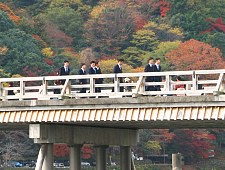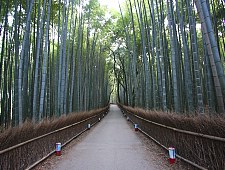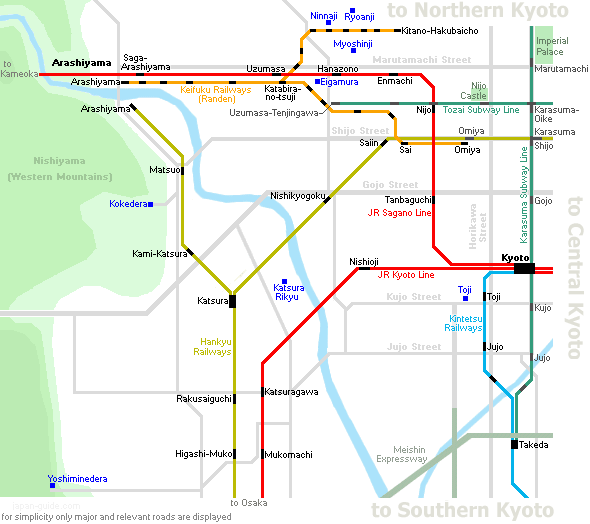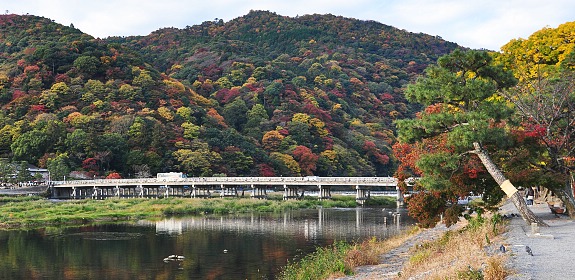
Arashiyama (嵐山) is a pleasant, touristy district in the western outskirts of Kyoto. The area has been a popular destination since the Heian Period (794-1185), when nobles would enjoy its natural setting. Arashiyama is particularly popular during the cherry blossom and fall color seasons. The Togetsukyo Bridge is Arashiyama's well known, central landmark. Many small shops, restaurants and other attractions are found nearby, including Tenryuji Temple, Arashiyama's famous bamboo groves and pleasure boats that are available for rent on the river. North of central Arashiyama the atmosphere becomes less touristy and more rural, with several small temples scattered along the base of the wooded mountains. The area north of the Togetsukyo Bridge is also known as Sagano, while the name "Arashiyama" technically just refers to the mountains on the southern bank of the river but is commonly used to name the entire district. 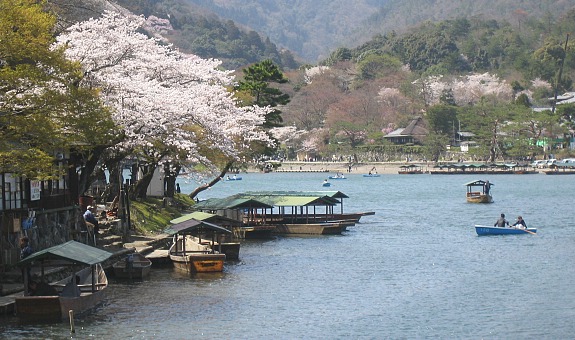
One of the most enjoyable and convenient ways to travel around the Sagano area is by rental bicycle, which are available for around 1000 yen near the train stations. Cycling through rural residential areas and past fields while traveling between temples can be one of the most enjoyable parts of a visit to Arashiyama. There is also an attractivepreserved town area near the Adashino Nenbutsuji Temple. Arashiyama becomes most attractive (and busy) around early April and the second half of November when the cherry blossom and fall color seasons usually peak. During the summer months, traditional cormorant fishing is practiced on the Hozu River for tourists to watch. Another good time to visit is during December's Hanatoro illumination, when lanterns line the streets and bamboo groves. 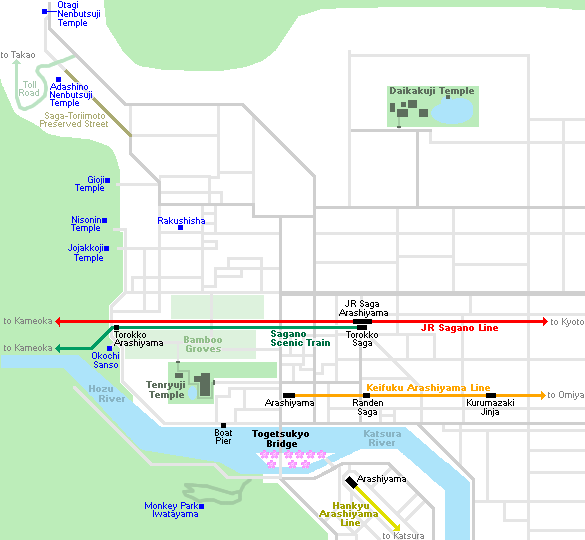
|
